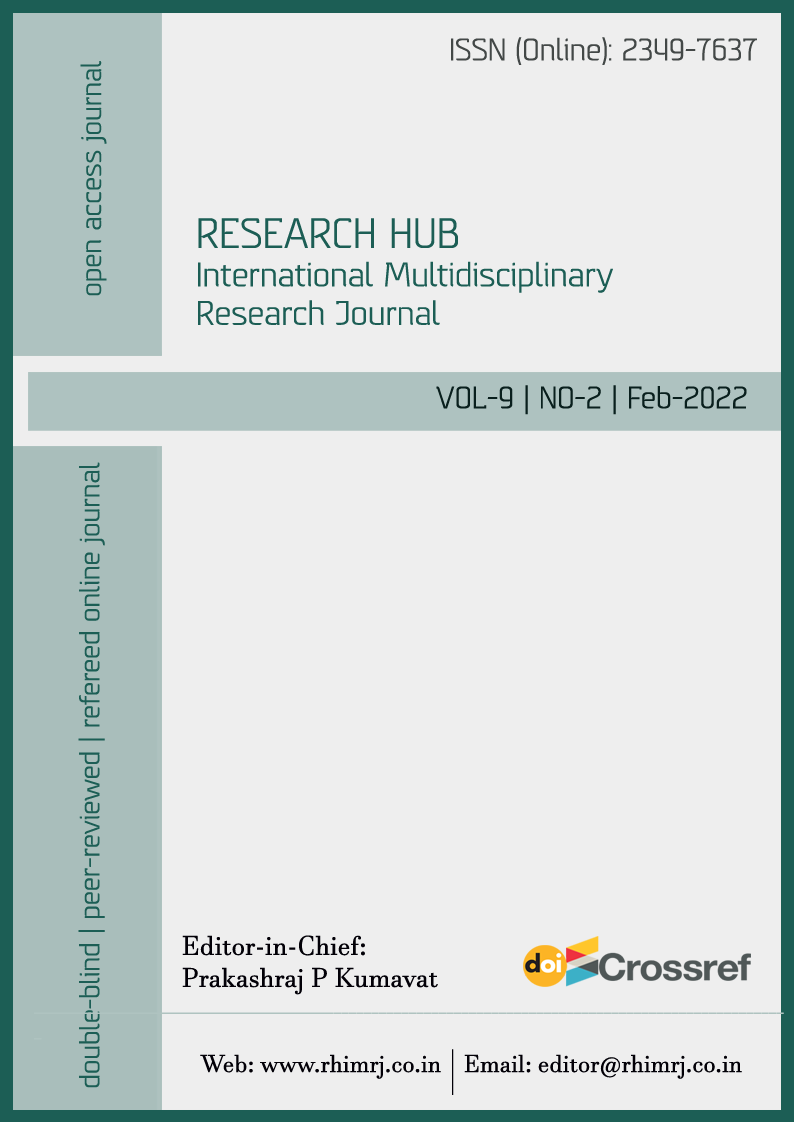Features of Contemporary Poems of Modern Hindi Literature Published in Jansatta
जनसत्ता में प्रकाशित आधुनिक हिन्दी साहित्य की समकालीन कविताओं की विशेषताएं
DOI:
https://doi.org/10.53573/rhimrj.2022.v09i02.012Keywords:
individualism, negation, poetry, acceptedAbstract
The "Teesra Saptak" was published in 1959, till this period is considered to be the period of new poetry. In the post-1960 period, there was an individualist-modernist poetic line of new poetry, which developed more rapidly. Although the poets who emerged in this period wrote differently from their earlier poetic lines. But the poetry of the first decade after sixties, which is also named as Sathotari poetry, expresses itself with many names and movements. With various names like Akvita, Rebel poetry, beat poetry, Sanatan and Suryoori poetry, Yutsawadi poetry, Nutan poetry, Sahaj poetry, Vichar poetry, etc., young poets were emerging with a new attitude and new attitude in the seventies, but none of these names and the movement could not acquire lasting importance in the Hindi poetic tradition. All these poetry movements proved to be momentary. The new poetic movements that were emerging with different names and declarations, in spite of all claims of differences, represented the same poetic vision and thought. In the absence of the accepted trend name, we would also call this youth poem of the seventies a sixties poem.
In the year 1967-68, there were some important changes in the Indian conditions, which also had an effect on Hindi poetry and the poet gradually started getting free from the individualism, negation, defeatism etc This period of Hindi poetry is very important, although after 75 there were some important changes in the tone of this poem. The evolution of contemporary poetry has been like this.
Abstract in Hindi Language:
“तीसरा सप्तक” का प्रकाशन 1959 में हुआ था, इस अवधि तक नयी कविता का काल माना जाता है। सन् 1960 के बाद के दौर में नयी कविता की व्यक्तिवादी-आधुनिकतावादी काव्यधारा रही जो कि अधिक तीव्र्रता के साथ विकसित हुई। यद्यपि इस दौर में उभरे कवियों ने अपने की पूर्व की काव्यधाराओं से अलग लिखा था। लेकिन साठ के बाद के पहले दशक की कविता जिसे साठोत्तरी कविता नाम भी दिया गया है, अपने को कई नामों और आंदोलनों से व्यक्त करती है। अकविता, विद्रोही कविता, बीट कविता, सनातन एवं सूर्योदयी कविता, युयुत्सावादी कविता, नूतन कविता, सहज कविता, विचार कविता आदि विभिन्न नामों के साथ सातवें दशक में युवा कवि नये तेवर और नयी भंगिमा के साथ उभर रहे थे परन्तु इनमें से एक भी नाम और आंदोलन हिंदी काव्य परंपरा में स्थायी महत्व प्राप्त नहीं कर सका। ये सभी काव्यांदोलन क्षणजीवी प्रमाणित हुए। अलग-अलग नामों और घोषणाओं के साथ जो नये काव्यांदोलन उभर रहे थे, वे सारी भिन्नताओं के दावों के बावजूद एक सी काव्य दृष्टि और विचार दृष्टिका प्रतिनिधित्व कर रहे थे। सर्वस्वीकृत प्रवृत्तिगत नाम के अभाव में हम भी सातवें दशक की इस युवा कविता को साठोत्तरी कविता कहेंगे।
सन् 1967-68 में भारतीय परिस्थितियों में कुछ महत्वपूर्ण परिवर्तन हुए जिनका प्रभाव हिंदी कविता पर भी पड़ा और साठोत्तरी कविता की व्यक्तिवादिता, निषेधता, पराजय-भाववाद आदि से कवि धीरे-धीरे मुक्त होने लगा और उसके बदले एक नयी आशा और उत्साह का उदय हुआ। हिंदी कविता का यह दौर अत्यंत महत्वपूर्ण है यद्यपि 75 के बाद इस कविता के तेवर में कुछ महत्वपूर्ण परिवर्तन आए। समकालीन कविता का इस प्रकार विकास क्रम रहा है।
Keywords: व्यक्तिवादिता, निषेधता, कविता, सर्वस्वीकृत



